Being the wettest month of the year, July in India is when the monsoon arrives in full rhythm. This is when forests get a thousand shades of green, waterfalls come alive, and the air enjoys a cool, earthy hush. While some parts of the country struggle with flash floods and heavy downpours, there are plenty of safe and stunning places to visit in July in India that offer a perfect balance of beauty, weather, and experience.
One of the best things about travelling in July in India is that there are ample options available based on what you want. From misty hills in the Western Ghats to quiet valleys tucked away in Odisha, there’s so much India has to offer.
Whether you’re a couple dreaming of a romantic getaway in the rain, a solo traveller seeking peace, or a family looking for a unique nature escape, you can always travel in July in India and enjoy its natural beauty.
In this list, we bring some of the best destinations to visit in India in July, minus the chaos of bad weather and unwanted natural calamities. These ten handpicked places offer everything from lush scenery and waterfalls to heritage walks and spicy street food, all wrapped in the romantic lull of the rainy season.
Let’s dive into the top 10 best places to visit in India in July, and help you plan a trip that’s as safe as it is unforgettable.
🧭 Quick Picks: Where to Go in July Based on Your Travel Style
| 👥 Travel Type | 🌍 Best Destination | 💡 Why It’s Great |
|---|---|---|
| 👨👩👧👦 Family Trip | Mahabaleshwar, Maharashtra | Easy access, safe, scenic, kid-friendly fun |
| 💑 Romantic Getaway | Mount Abu, Rajasthan | Quiet charm, boating, viewpoints, cozy stays |
| 🎒 Solo Adventure | Hampi, Karnataka | Rich culture, great for slow solo explorers |
| 🌿 Offbeat Explorer | Daringbadi / Netarhat | Lesser-known, peaceful, lush in monsoon |
Top 10 Places to Visit in India in July 2025 for a Monsoon Break
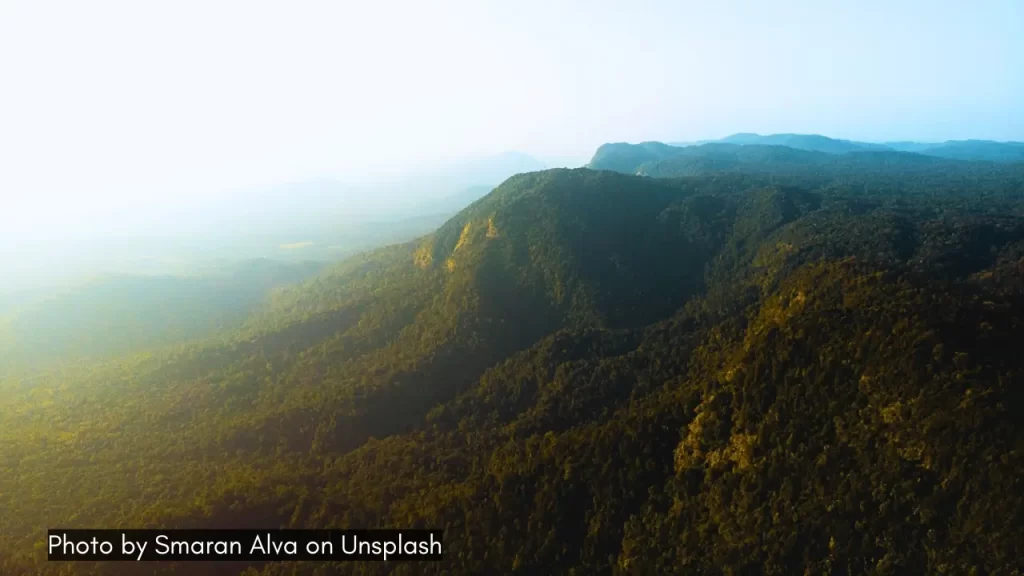
1. Agumbe, Karnataka
Tucked deep in the Western Ghats, Agumbe is a monsoon masterpiece — rain-soaked trails, thick canopies, and air so fresh it feels filtered by the gods. Known for receiving one of the highest rainfalls in South India, this sleepy village turns into a lush, living jungle in July. If you’ve ever dreamt of walking into a real-life nature documentary, this is it.
Expect fog-draped roads, ancient rainforests, and the occasional sound of cicadas breaking the silence. It’s also home to the Agumbe Rainforest Research Station, and if you’re lucky, you might even hear whispers of the elusive king cobra — Agumbe’s most famous (and shy) resident.
Why Visit in July:
- Peak monsoon means surreal forest scenery
- Quiet, uncrowded and deeply immersive
- Watch waterfalls like Barkana Falls and Onake Abbi in full glory
- Visit the house where Malgudi Days was filmed
- Great for nature walks and slow travel
Pro Tip: Stay at a rainforest homestay and wake up to the sound of frogs and birds — it’s the kind of alarm clock you won’t snooze.
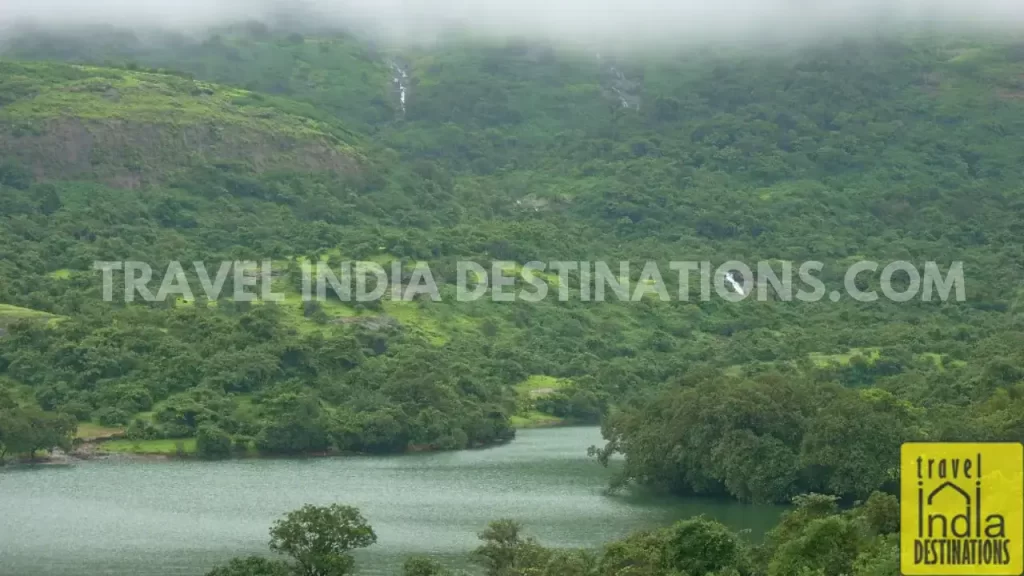
Come July, Lonavala stops pretending to be a hill station and fully transforms into a monsoon wonderland. Rain drizzles over red mud roads, the scent of wet earth is thick in the air, and the crowds (yes, they’re here too) are buzzing with chai in hand and phones pointed at mist-covered valleys.
But if you look beyond the tourist chaos, Lonavala holds magic. Think ancient Buddhist caves, moss-laden trekking trails, hidden waterfalls, and forts with wind howling through broken archways. It’s nostalgic, chaotic, and romantic— all in one.
Why Visit in July:
- Ideal month for treks to Lohagad Fort
- Waterfalls like Kune and Bhushi Dam come alive
- Scenic train rides from Mumbai and Pune
- Forests around Karla and Bhaja Caves glow lush
- Monsoon food stalls serve piping hot vada pavs with a view
Pro Tip: Head out early if you’re visiting on a weekend. The crowds start rolling in post-noon, and the magic fades with the honks.
For a full list of sights, treks and secret corners, check out our guide to the best places to visit in Lonavala.
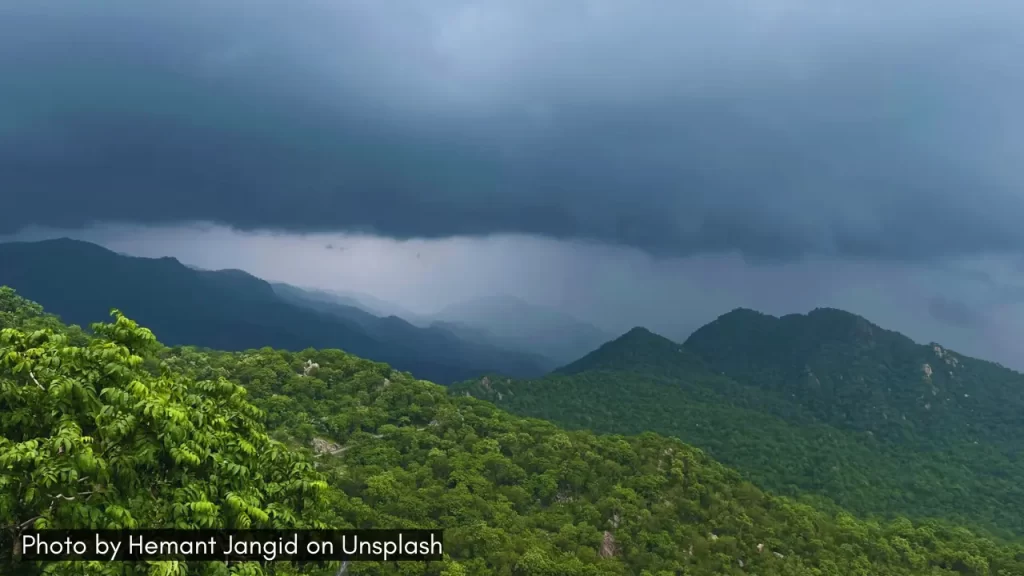
3. Mount Abu, Rajasthan
Mount Abu is proof that even Rajasthan, the land of scorching summers, knows how to cool down in style. In July, this lone hill town tucked inside the Aravalli Range becomes a monsoon hideaway, clouds drifting low, lake waters rippling with rain, and the streets wearing a wet, green shimmer that feels almost out of place in the desert state.
The vibe is slow and old-school. You’ll walk past colonial-era bungalows, sip ginger chai by Nakki Lake, and watch mist curl around the ancient marble of the Dilwara Temples. It’s not rugged like the Western Ghats; it’s gentle, ghostly, and a little dramatic. Perfect for couples or anyone who wants the romance of the rains without the chaos.
Why Visit in July:
- Misty mornings and cooler-than-expected weather
- The Dilwara Temples look surreal in the monsoon fog
- Rowboats on Nakki Lake with low-hanging clouds
- Scenic drives through the Aravallis
- Feels like a monsoon postcard wrapped in Rajput pride
Pro Tip: Skip the main town bustle and find a stay in one of the heritage bungalows uphill — Mount Abu’s real charm lies in the quiet.
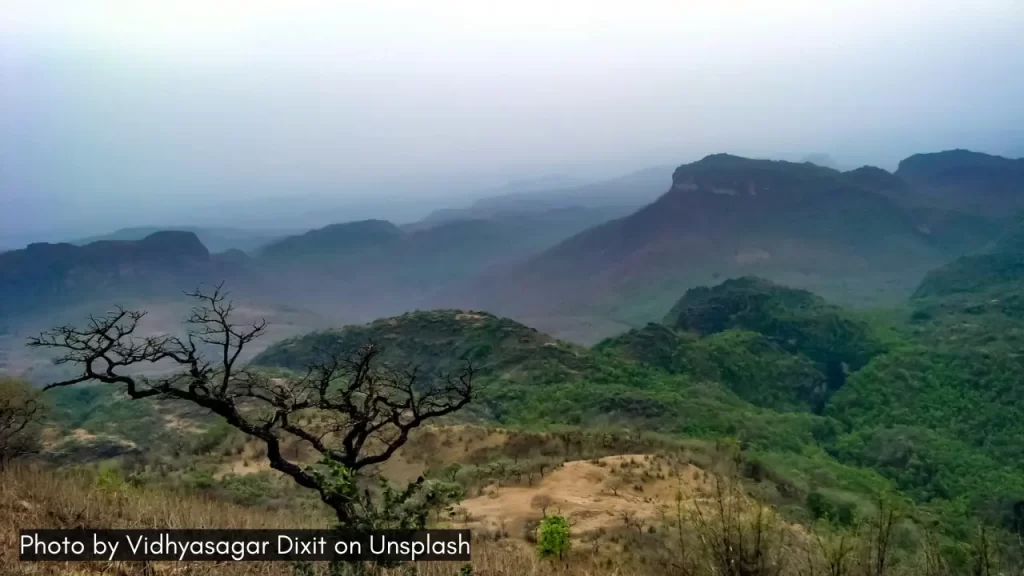
4. Pachmarhi, Madhya Pradesh
Tucked away in the Satpura range, Pachmarhi feels like one of those places India keeps a secret on purpose. Come July, it’s drenched in mist and moss — the forests are alive, the waterfalls roar, and the colonial bungalows seem to float in a dream. It’s the kind of place that doesn’t shout for attention; it hums quietly, like an old melody.
You’ll find ancient cave shrines carved into sandstone, hills carpeted in ferns, and enough trails to keep the trekker in you smiling. The monsoon makes Pachmarhi bloom, both in colour and calm. Undoubtedly, it remains one of the best tourist places in Madhya Pradesh for monsoon holidays.
Why Visit in July:
- Spectacular waterfalls like Bee Falls and Apsara Vihar are in full flow
- The Pandava Caves are wrapped in jungle mystique
- Fewer tourists compared to other hill stations
- Offers a mix of adventure, history and spiritual vibes
- Great for couples, families and nature lovers alike
Pro Tip: If you’re into quiet treks, do the short hike up to Dhoopgarh — the highest point in Madhya Pradesh. Monsoon sunsets here feel otherworldly.
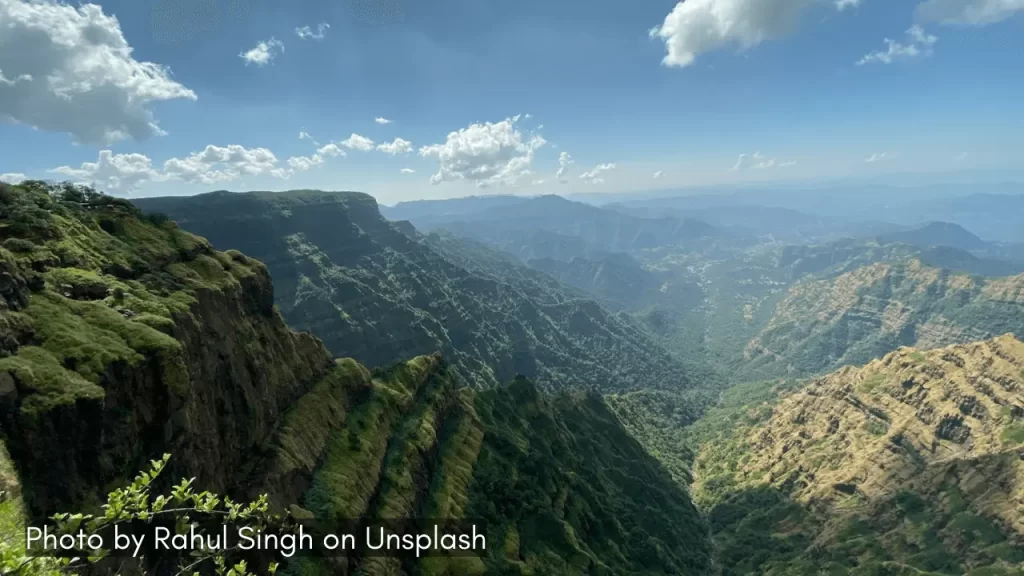
5. Mahabaleshwar, Maharashtra
In July, Mahabaleshwar isn’t just another hill station — it’s a full-blown monsoon mood. The roads turn slick, the valleys vanish behind veils of mist, and every second viewpoint looks like it’s straight out of a dream. This is the Western Ghats in their dramatic best — thunder over Venna Lake, fog curling through pine trees, and the kind of silence you only get in places where the rain talks more than people do.
Strawberries may be off the menu, but in their place come countless waterfalls, hot corn on the cob, and forest trails that feel straight out of a fairy tale. This makes Mahabaleshwar one of the best hill stations in Maharashtra during the monsoon weather.
Why Visit in July:
- Iconic viewpoints like Arthur’s Seat and Elephant’s Head turn mystical
- Lingmala Waterfalls roar to life and are a must-see this time of year
- Peaceful off-season vibe with fewer crowds
- Monsoon drives from Pune and Mumbai are stunning
- The weather stays cool, with fog rolling in daily
Pro Tip: Don’t bother chasing sunsets – instead, chase the clouds. Go early morning for the clearest (and eeriest) views before the fog swallows everything whole.
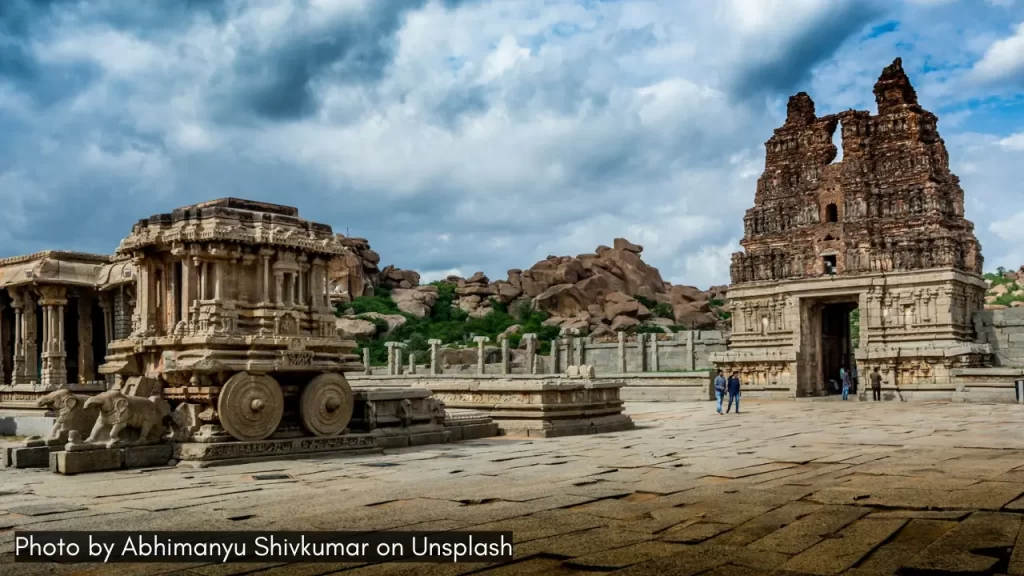
6. Hampi, Karnataka
Hampi in July is magic you don’t expect. The rain doesn’t flood it — it soaks it just enough to soften the edges of its ancient ruins. What was once dry and dusty turns lush and cinematic: think palm trees swaying beside crumbling temple gopurams, boulders glistening after a drizzle, and Virupaksha Temple rising through the mist like it owns the sky.
There’s a calm in the chaos here — fewer tourists, cooler weather, and endless scope to explore on foot or by bicycle. Every trail feels like a history lesson whispered through the wind.
Why Visit in July:
- The UNESCO ruins look stunning against the green, rain-washed backdrop
- Fewer crowds make for peaceful, immersive walks
- Explore Virupaksha Temple, Vijaya Vittala Temple, and riverside ghats in cool weather
- Affordable stays with gorgeous views across the boulder fields
- Great for slow travellers, photographers, and history lovers
Pro Tip: Rent a cycle early morning and head across the river to Anegundi — the views post-rain are pure wallpaper material.
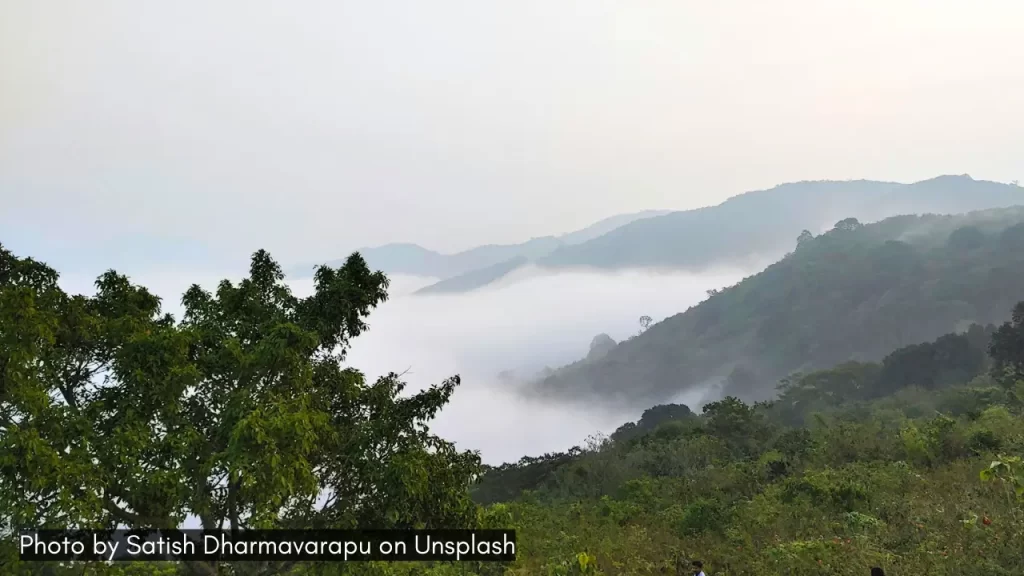
7. Lambasingi, Andhra Pradesh
You don’t usually associate Andhra Pradesh with fog, chill, and rolling hills — unless you’ve heard of Lambasingi. Nicknamed the “Kashmir of Andhra,” this tiny hamlet sits at 3,000 feet and gets surprisingly cold even during the monsoon. Come July, it’s all grey skies, pine forests dripping with mist, and clouds sneaking between the trees.
It’s peaceful, non-touristy, and perfect if you’re looking to escape the usual noise of more commercial hill stations. There are no flashy attractions — just nature in her raw, untouched form. And that’s exactly the point when you visit Lambasingi, one of the top monsoon destinations in Andhra Pradesh.
Why Visit in July:
- Unique chill and mist even in peak monsoon
- Long drives through pine forests and fog
- Scenic viewpoints like Lambasingi Viewpoint and Kothapalli Waterfalls
- Authentic village life and local coffee
- Offbeat, quiet, and deeply photogenic
Pro Tip: Mobile networks can be patchy, so download your maps and playlists before you arrive and then just lean into the digital detox.
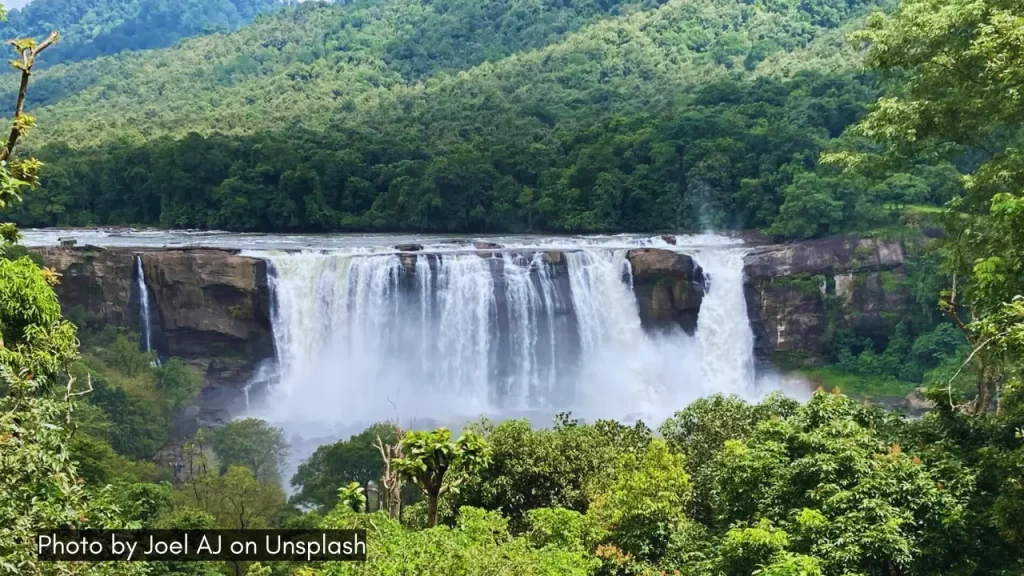
8. Thrissur, Kerala
Thrissur isn’t just the cultural capital of Kerala – in July, it becomes a lush, rain-soaked marvel. The temples glisten, the streets smell of wet earth and sandalwood, and everywhere you go, you hear the rhythmic patter of rain, like a distant chenda drum echoing through the hills.
But if there’s one sight that defines Thrissur in monsoon, it’s the mighty Athirappilly Falls. Called the Niagara of India, this roaring cascade is at its most powerful in July, surrounded by thick green forests and drenched air. It’s dramatic, cinematic, and completely humbling to stand before.
Why Visit in July:
- Athirappilly Falls is at its peak power — truly unmissable
- Lush greenery all around the Vazhachal Forest Reserve
- Temple town vibes with fewer tourists and lots of charm
- Easy access from Kochi for weekend travellers
- Great for monsoon lovers, photographers, and culture seekers
Pro Tip: Carry rain gear, but don’t bother with umbrellas at the falls — the mist will soak you anyway. Just lean in and get drenched like a local.
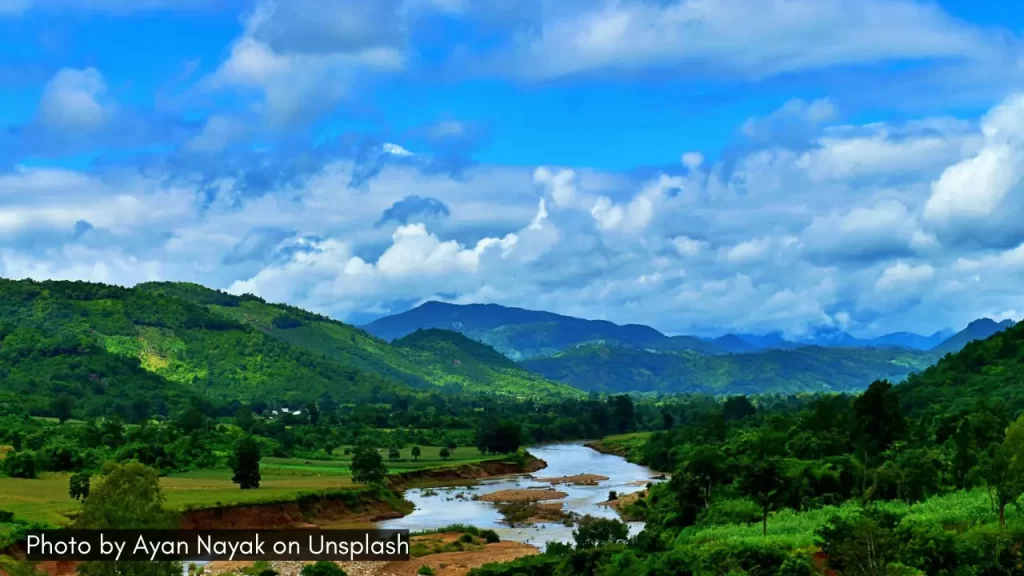
9. Daringbadi, Odisha
You’d never expect Odisha — land of temples and coastal plains — to hide a place like Daringbadi. But tucked in the Kandhamal district, at over 3,000 feet above sea level, this tiny hill station surprises everyone who visits. Nicknamed the Kashmir of Odisha, Daringbadi is cool, calm, and shockingly green in July.
Come monsoon, pine forests sway, waterfalls burst alive, and coffee gardens shimmer with rain. It’s offbeat, under-the-radar, and exactly the kind of place you brag about discovering before it became popular.
Why Visit in July:
- Beautiful monsoon scenery with rolling hills and pine groves
- Seasonal waterfalls and quiet forest trails
- Less commercial, more immersive
- Ideal for nature lovers, offbeat travellers and photographers
- Cooler than most places in Eastern India during this time
Pro Tip: Pair it with a short stay in nearby Belghar Nature Camp if you’re into eco-stays and forest safaris.
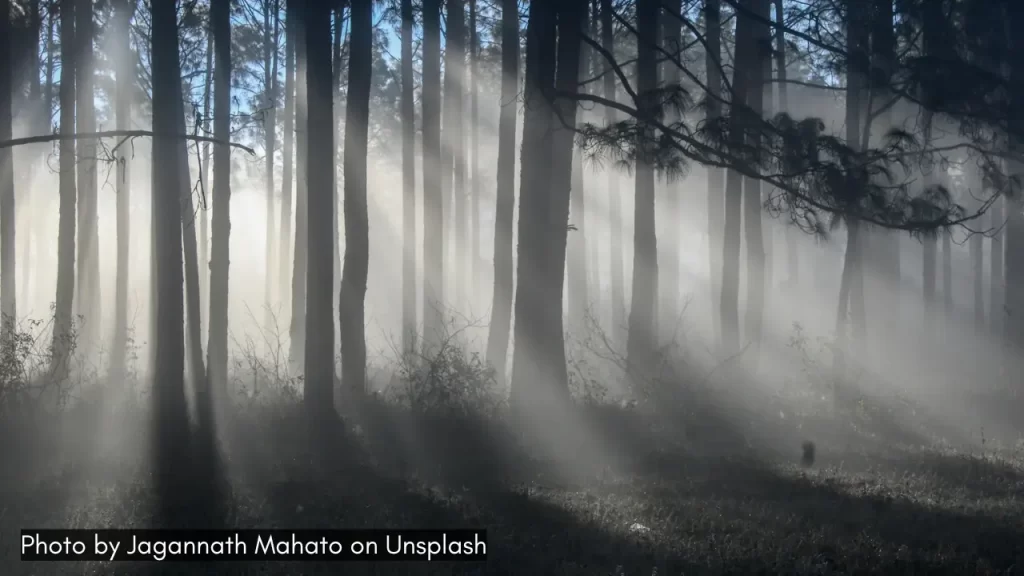
10. Netarhat, Jharkhand
Netarhat, often called the “Queen of Chotanagpur” is one of Jharkhand’s best-kept secrets — a sleepy hill town where time moves slowly and the clouds drift even more slowly. In July, the rains awaken its forests, fill up hidden streams, and turn the landscape into a lush green dream.
You won’t find flashy cafes or Insta-ready resorts here. What you’ll get instead is soul-soothing silence, cool air, pine-scented mornings, and some of the most beautiful sunsets in all of Eastern India — especially from the iconic Netarhat Sunset Point.
Why Visit in July:
- Deep green forests and valleys soaked in mist
- Stunning drives through the plateau region
- Peaceful, crowd-free and ultra-budget-friendly
- Ideal for digital detox and reconnecting with nature
- Gorgeous views from Magnolia Point and nearby hilltops
Pro Tip: Carry cash and essentials – ATMs and stores are limited. Netarhat is all about going off-grid in the best way.
Conclusion
While July might be off-season for some, it’s peak discovery season for travellers who don’t mind a little mud on their boots and mist in their hair. These destinations offer more than just scenic beauty — they promise peace, poetry, and moments that stay long after the clouds have passed.
From the emerald forests of Agumbe and the quiet chill of Lambasingi, to the roaring waterfalls of Thrissur and the timeless charm of Hampi, India in July has a softer, slower rhythm — and it’s beautiful if you know where to go.
Planning is key when you plan to travel to India in July in India. If you are travelling by train, you can always use these train travel hacks we use to travel within India. This allows us to make things convenient and easy as we move across different destinations in India.
So pack your raincoat, some extra socks, and a heart ready to wander across these best places to visit in July in India. The monsoon is calling.
FAQs for Travel in July in India
Yes, if you love lush landscapes, fewer crowds, and off-season discounts. Monsoon destinations come alive in July, especially in the Western Ghats, parts of Central India, and select hill stations.
It’s best to avoid areas prone to flash floods or landslides, particularly parts of Himachal Pradesh, Uttarakhand, and Jammu & Kashmir and even the Western Ghats during peak monsoon. Always check weather advisories before finalising your plans.
Generally, yes, but do take basic precautions: avoid remote treks during heavy downpours, watch out for slippery paths, and follow local alerts. Stick to recommended destinations and avoid risky shortcuts while driving. You can use our monsoon travel tips in India to help you plan safe travels.
Essentials include:
– A quick-dry rain jacket or poncho
– Waterproof footwear or sandals
– Mosquito repellent
– Dry bags or zip locks for electronics
– Extra socks and quick-dry clothes
– Power bank (rains can affect electricity in some areas)
It depends on where you go. Many offbeat hill stations and rural destinations offer lower rates during monsoon. However, popular getaway spots like Lonavala and Mahabaleshwar can actually be more expensive on weekends due to tourist demand. Always check for weekday rates or early booking discounts.
Absolutely, just choose destinations with easy access, decent healthcare nearby, and less trekking involved. Avoid places that require steep hikes or have poor road conditions during heavy rain.
Yes, but you need to be flexible. Trekking, boating, and sightseeing are all doable, especially in places like Pachmarhi, Lonavala, and Netarhat, but be ready for occasional rain delays and always check with locals before venturing out.